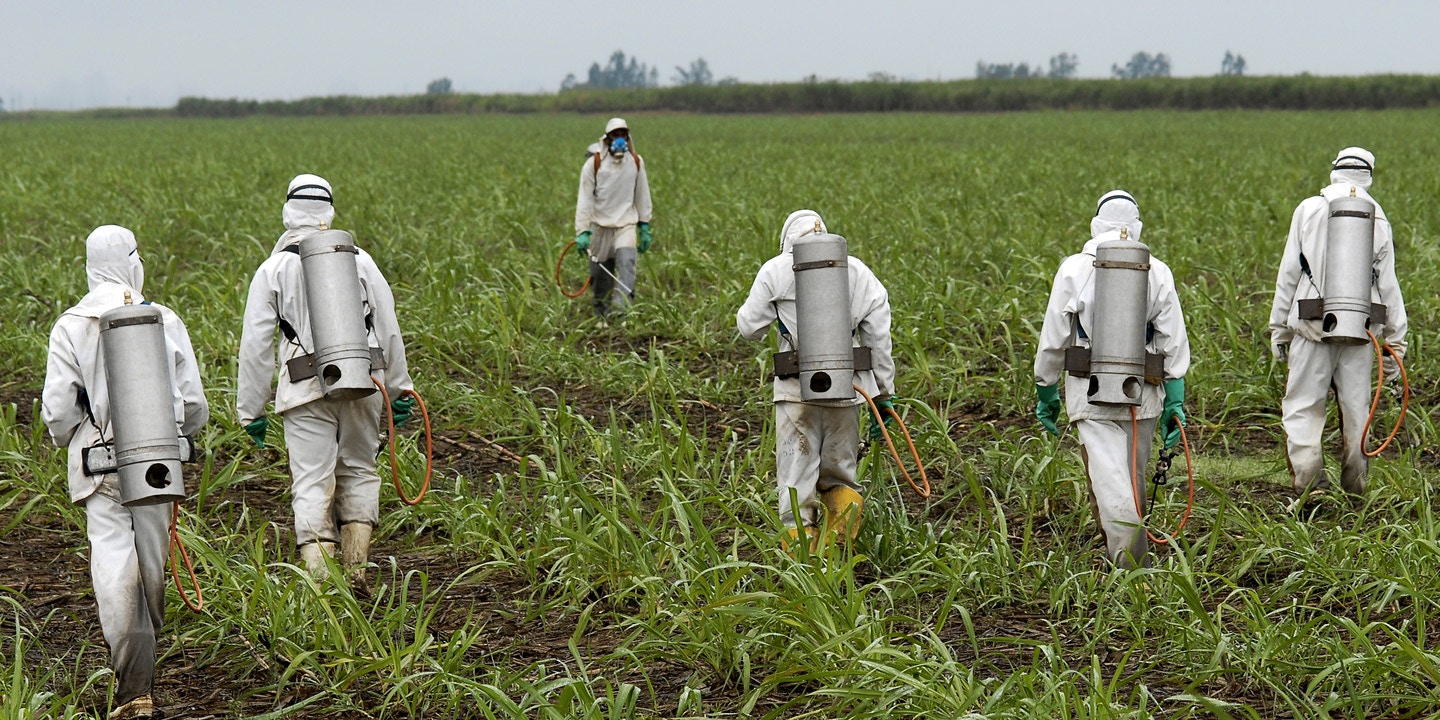02
Apr
Farmworkers at High Risk During Coronavirus Pandemic
 (Beyond Pesticides, April 2, 2020) As COVID-19 grips the U.S. and medical workers scramble for personal protective equipment (PPE), farmworkers charged with applying pesticides are facing potential shortages of the same protective masks, gloves, and Tyvek suits. Farmworkers are a frontline community to the compounding crises of pesticide poisoning and the coronavirus pandemic.
(Beyond Pesticides, April 2, 2020) As COVID-19 grips the U.S. and medical workers scramble for personal protective equipment (PPE), farmworkers charged with applying pesticides are facing potential shortages of the same protective masks, gloves, and Tyvek suits. Farmworkers are a frontline community to the compounding crises of pesticide poisoning and the coronavirus pandemic.
PPE producers announced plans to increase production of masks and other gear, but orders for disposable respirators and masks may take over three months to arrive to agricultural suppliers. “All of our major suppliers is being impacted,” said Carl Atwell, an agricultural PPE provider in Wisconsin, “Whether it’s Dupont, 3M, Honeywell—they’re all being told by the government to divert supply to hospitals first.”
Worsening the dilemma, common toxic pesticides are respiratory irritants that put farmworkers at higher risk. Epidemiological studies of farmworkers link toxic pesticide exposure with asthma or asthmatic symptoms. Individuals with underlying respiratory issues are less likely to recover from COVID-19.
“This issue of workers being exposed to toxic chemicals was already a big problem before the pandemic, so I can only imagine what will happen now,” Iris Figueora, a staff attorney with Farmworker Justice, told Bloomberg Environment.
Just last month, a group of Washington farmworkers walked off a worksite because their employer was not offering sufficient PPE. After 12 to 15-hour days of spraying pesticides, “My eyes (were) constantly irritating me,” said Jorge de los Santos, a farmworker.
The standard working and living conditions of farmworkers make a susceptible environment for the spread of COVID-19. While the CDC recommends a 6-foot distance between individuals to slow the spread of the airborne virus, “The distance principle, six feet between people, does not work in agriculture,” Amadeo Sumano, a farmworker, told the Guardian. Workers often live in close quarters. Sumano, for example, shares his apartment with six roommates. The health of farmworkers is a ticking time bomb at the heart of the food supply.
Immigration status represents an additional barrier to proper healthcare and compensation for these essential workers during the pandemic. In California, the U.S.’s largest agricultural state, researchers approximate that 60-70% of farmworkers are undocumented. While the Trump administration has pledged not to enforce immigration laws against individuals seeking medical care, advocates say many are still fearful of accessing services.
Farmworkers have been deemed essential during the pandemic, but they are not offered the same kind of support as other workers. The stimulus package has billions of dollars appropriated to agricultural businesses harmed by COVID-19, but not necessarily financial support at the worker level. The majority of farmworkers will not receive the stimulus’ $1,200 checks going to taxpayers. The relief package offers guest workers emergency sick pay, but advocates say workers are unlikely to take advantage.
Farmworkers, the backbone of the nation’s food supply, are at high risk during the coronavirus pandemic, a situation worsened by the use of toxic pesticides. The issues that farmworkers face are not new – Beyond Pesticides has advocated against agricultural poisoning since the 1980’s – but this stressful situation shines a light on an already festering problem. When the pandemic ends, it is critical that we not return to toxic “normal.” Organic agriculture offers a safer and regenerative alternative.
Sources: Bloomberg, The Guardian










